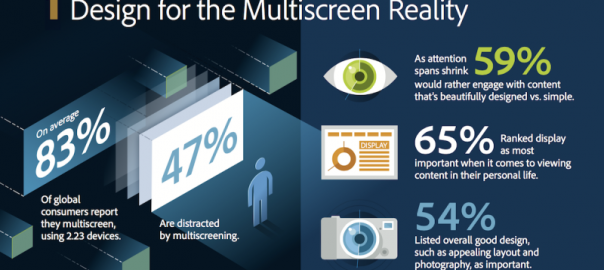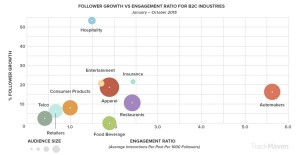New report complements earlier study in October, both based on a survey of more than 12,000 consumers in six countries.
If you’re wondering how to keep online consumers engaged with content, wonder no more.
Adobe has laid out five such rules in its new report, “The State of Content: Rules of Engagement.” It builds on the first installment of this two-part series, “The State of Content: Expectations on the Rise,” which was released in October.
The earlier study presented many of the statistics that describe the multi-device, content-aware consumer population in six surveyed Western countries, while the newer report summarizes the marketing takeaways from that data.
Here, then, are the five rules:
#1: Design For The Multiscreen Reality.
A whopping 83 percent of consumers use more than one device at a time, with the average being 2.23 devices. So it’s best to make sure your content works beautifully on multiple device types, especially since 54 percent feel that overall good design (layout, photography) is the most important part of content experience.
#2: Don’t Fall Victim To #TLDR (Too Long; Didn’t Read)
Sixty-seven percent of respondents said they’d drop the content if it’s too long, and 63 percent prefer shorter stories to long articles.
#3: You Really Need To Lighten Up
Humor makes brands more relatable, according to 70 percent of global consumers. Almost one-third think entertaining content is more important than accuracy — except in France (of course), where 42 percent believe the opposite. “Making people laugh” was the top reason for sharing content.
#4: In Our Relationships We Trust
There’s a high level of suspicion about online content. Fifty percent of consumers question if negative remarks have been removed from comments or reviews about a product, and about the same percentage wonder if the author of a positive review was paid in some way.
For 65 percent, content is more likely to be shared if it comes from a friend or a family member.
#5: Don’t Show Up Uninvited
In other words, Adobe says: “Consumers are willing to share information, but they expect return on value.” The flip side of that observation is that brands apparently have the permission from many consumers to request info if it’s used to match better content.
Three-quarters of consumers will share at least one piece of info about themselves if it will improve content recommendations. But 40 percent think companies should do more to lessen consumer concerns about sharing info.
About the same percentage of consumers are open to suggestions or positive recommendations that are based on their behavior, such as a recommendation of an article about smartphones if you’ve been looking at a web page of smartphones on sale.
The two reports are based on more than 12,000 online surveys conducted in September in six countries: the US, the UK, France, Germany, Japan and Australia.
(Some images used under license from Shutterstock.com.)
Marketing Land – Internet Marketing News, Strategies & Tips
(43)









